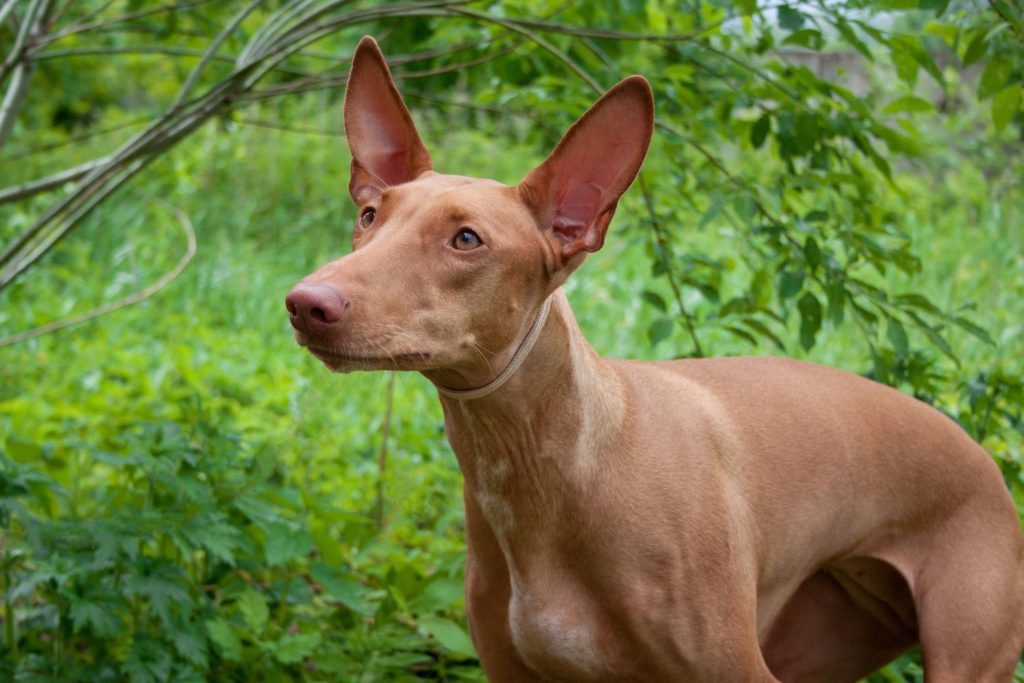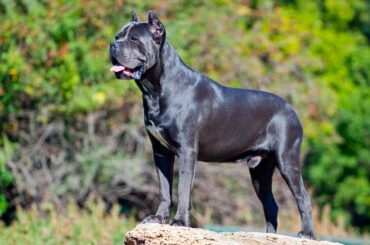The Pharaoh Hound, also known as the Kelb tal-Fenek, is a Maltese hunting dog breed. The Maltese name means “rabbit dog,” because it is typically employed for rabbit hunting in the rugged terrain of the islands. The Kelb tal-Fenek is a traditional Maltese breed. The Pharaoh Hound is a descendant of the canines shown in Egyptian tomb paintings.
Modern DNA research implies that the breed is a somewhat recent evolution from numerous other breeds, rather than being of ancient provenance. It was just two hundred years ago that it separated genetically from the Sicilian Cirneco dell’Etna. The modern Cirneco is a Sicilian breed with a structure and appearance similar to the Kelb tal-Fenek, however, it is slightly smaller.

The Pharaoh Hound is one of many breeds that may rightfully claim to be the world’s oldest, with little alteration in the last 3,000 years. The breed bears a striking similarity to the Egyptian pharaohs’ jackal god Anubis, as well as dogs painted on their tombs, and later, dogs depicted in ancient Greek art. Malta’s National Dog is now the Pharaoh Hound.
The breed was rediscovered and transported to England and later America in the 1960s. In 1963, the first litter outside of Malta was born in the United Kingdom. Malta’s National Dog is now the Pharaoh Hound. The breed was rediscovered and transported to England and later America in the 1960s. It was recognized by the American Kennel Club in 1983.
Table of Contents
Physical Appearance
The Pharaoh hound dog is sleek and slim. With a little halt, the head is lengthy and elegantly sculpted. The coat is short and lustrous. White patches on the back, sides, shoulder, or back of the neck are disqualifying characteristics, although the tip of the tail can be white. The eyes are deep amber color. When the dogs are enthusiastic or joyful, they have an odd habit of nervousness, in which their ears and noses turn bright pink.

The dog is built like a greyhound, with the power, and agility to run agilely along rocky cliffs and land. The dog’s strong nose and huge movable ears allowed it to track animals underground. The gait is loose, flowing, and the head is raised high, slightly longer than tall.
Behavior
Despite its peaceful demeanor indoors, this breed enjoys running. The Pharaoh hound dog is sensitive, affectionate, peaceful, and nice with children and other dogs, yet given the breed’s haunting past, it may chase unfamiliar creatures. When it comes to strangers, the dog is reticent, and some are even timid.
The breed is independent but eager to please, and it has the unusual trait of facial expression when stimulated, with the color of the nose and ears shifting. They will bark to alert you to worrisome sounds, but they are more inclined to engage in play with a stranger than to guard the house.
Training and Caring
Training must be innovative and enjoyable in order to get the best out of a Pharaoh Hound. Make it a game, and utilize positive reinforcement like snacks, toys, and games as prizes. The Pharaoh Hound was designed to run and need outlets for its boundless energy. Include one or two daily walks in your workout plan, as well as daily running opportunities in a safe enclosed location.

Younger dogs will require more frequent leg stretching, while senior Pharaoh Hounds may be content with one or two daily running sessions and/or walks. When they’ve had their fill of exercise, Pharaoh Hounds are usually satisfied to spend the rest of the day lounging at home, perhaps with an impromptu game of fetch. Soft bedding and warmth are important to the dog. The coat is low-maintenance and simply needs to be brushed once in a while to remove dead hair.
Health
For a purebred dog, the Pharaoh Hound is remarkably healthy. It has a low hereditary predisposition to disease and can survive for 11 to 14 years.




